Translating Words Into Symbols Coloring Notes
I created this translating words into symbols coloring notes for my Algebra 1 students to glue in their interactive notebooks. One of our Algebra 1 standards is that students be able to translate between written expressions and equations and symbolic expressions and equations. This is one of those topics that drives me crazy to try to teach because it seems so intuitive to me. My students, however, have traditionally struggled with it.
If I ask them to translate “the sum of a number and five,” they can usually come up with “x + 5.” No problem. But if I ask them to translate, “the product of a number and the sum of the number and five,” they shut down.
I know there’s a lot of talk in the MTBoS about not teaching kids which words mean which operation. And, I see where they are coming from with this. Half of can mean multiply by 1/2 or divide by 2. Per can mean multiply or divide. But, if students don’t know what the word quotient means, how am I supposed to help them without giving them a chart???
Here’s this year’s attempt at teaching this topic.
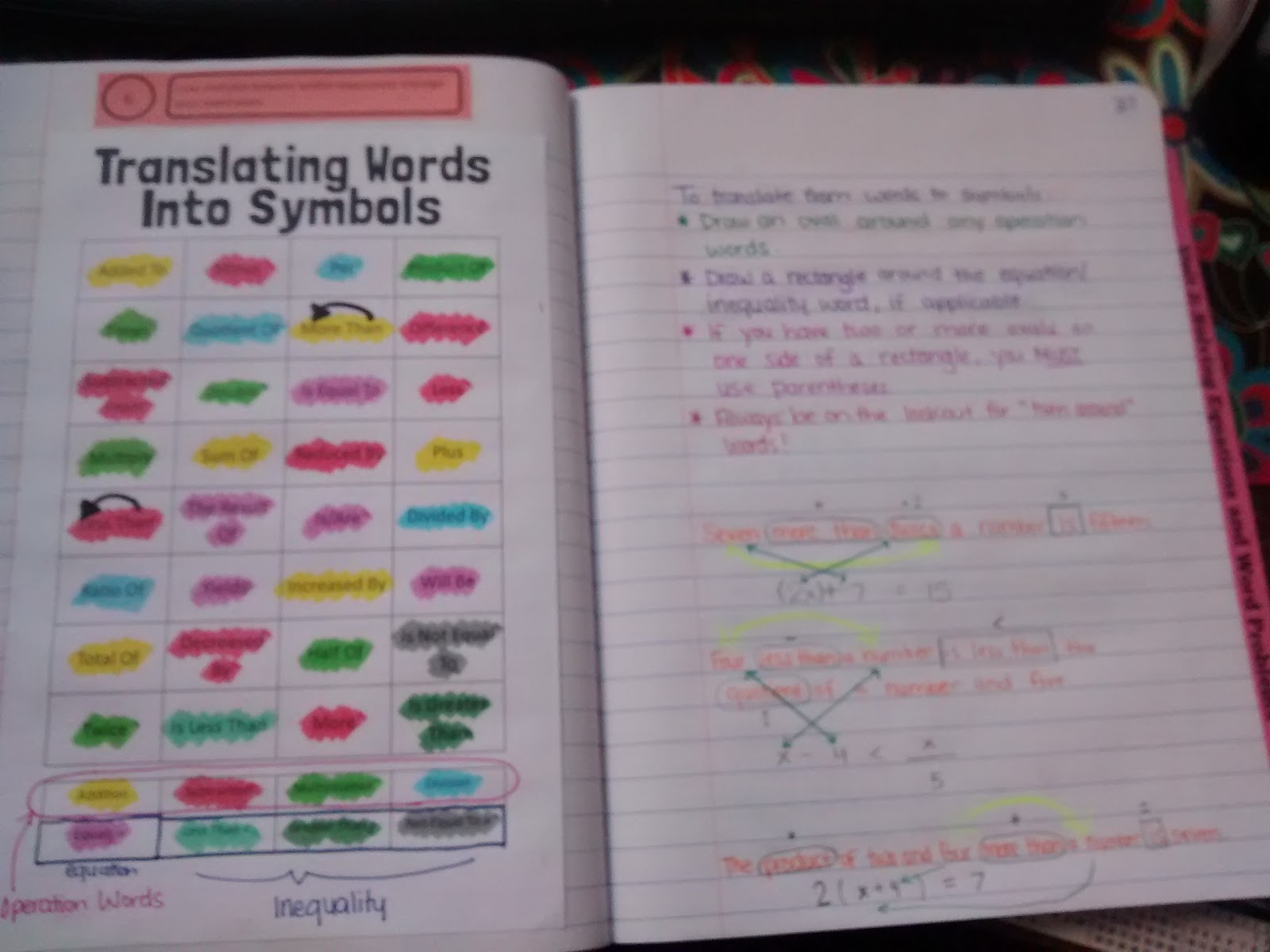
In the past, I’ve had students make foldables and list the key words. This was time consuming, and I often found myself giving students a lot of the words because they couldn’t come up with them on their own.
I knew I wanted to try something new this year. I thought about doing a card sort to glue in, but a million little pieces to glue in and my Algebra 1 students don’t mix well. Then, I remembered how @druinok had modified a statistics card sort I had made to be a coloring activity.
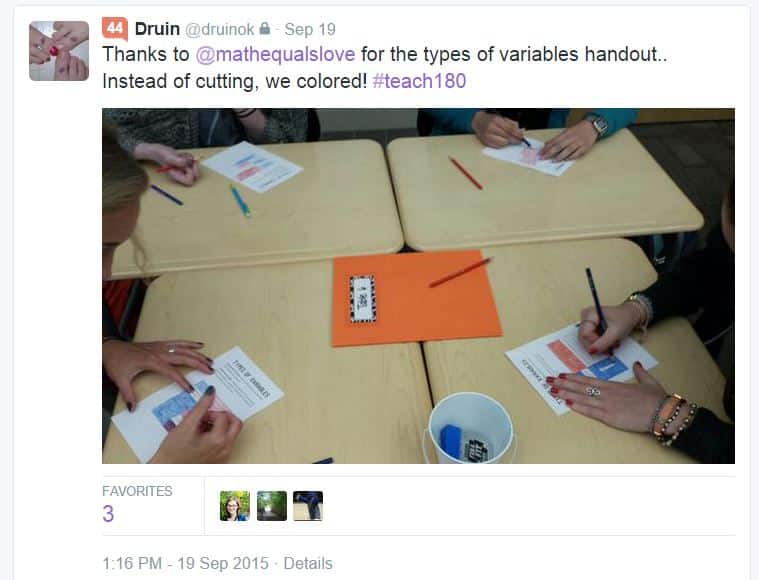
I decided to make a coloring page for my students to complete.
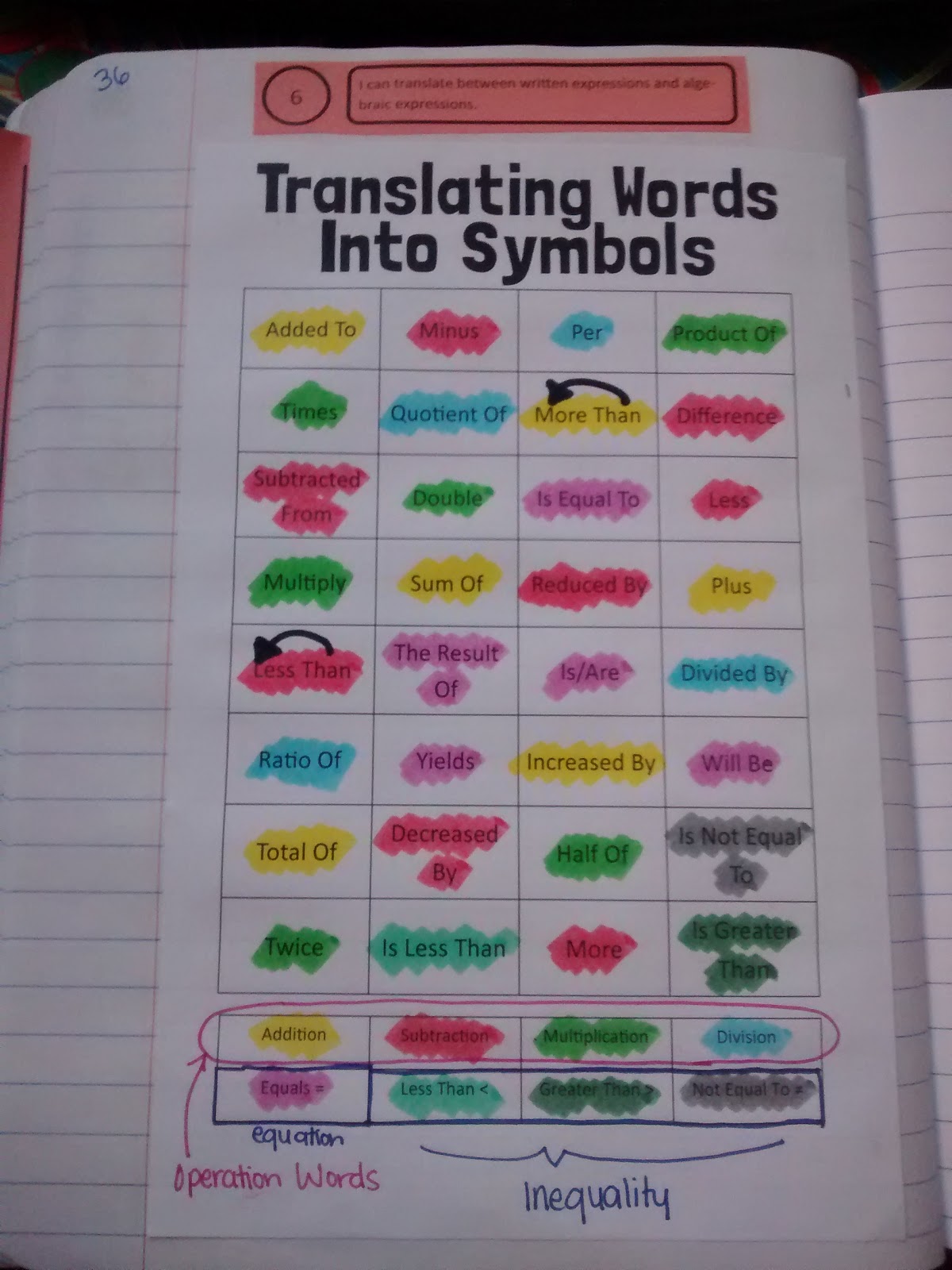
The kids kept trying to classify the words that mean equals as add/subtract/multiply/divide which was frustrating. We did this as a class. I asked them to suggest words for addition. We colored all those. Then, subtraction, etc.
We drew arrows over the “turn around words.” This wasn’t enough, however, to make it stick for my students. This needs some more work for next year!
I think I’ll keep the coloring aspect for next year. I missed some phrases when putting this together quite hastily. (Read: during first hour plan to teach third period!) So, I definitely want to try and make it more comprehensive.
I also want to come up with a way to signify that some words can mean multiple different operations. Still working out the best way to do that. Any suggestions on improving this lesson would be greatly appreciated!
Another area my kids have struggled with in the past was knowing when to use parentheses. I decided to try a new approach this year.
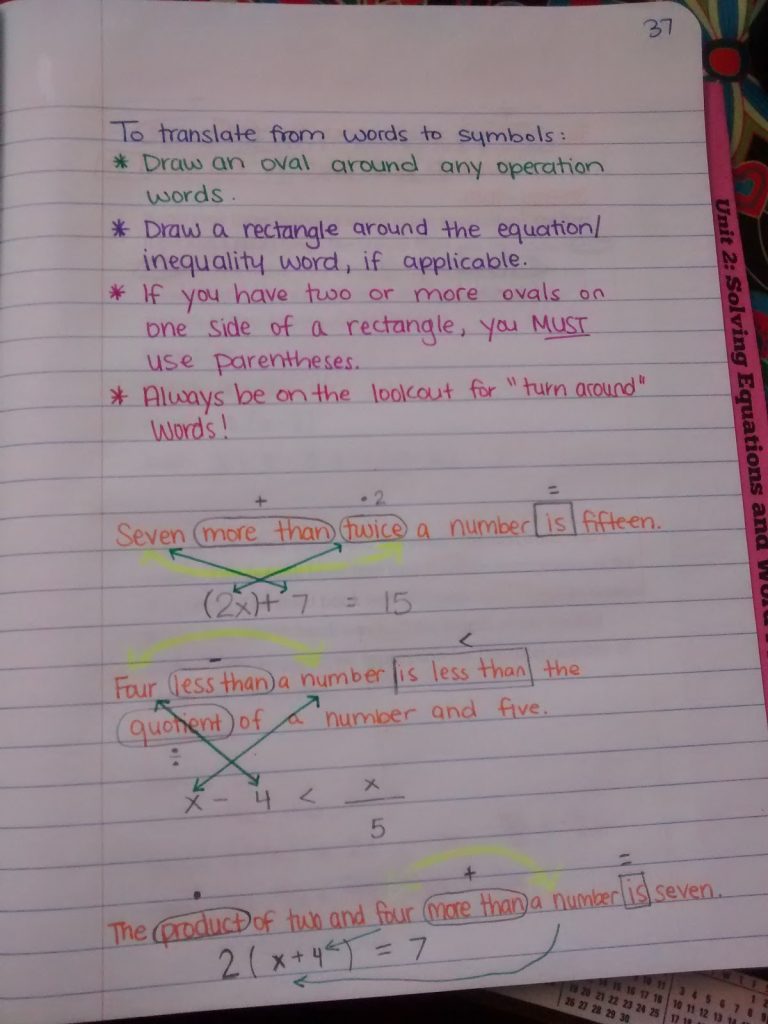
I had students draw ovals around all of the operation words. Then, I had them draw a rectangle around the equation/inequality word, if applicable. If there are 2+ ovals on one side of the rectangle, I told them they needed to use parentheses.
Now, you and I both know that these parentheses are sometimes redundant. But, I’d rather my students putting parentheses and not needing them than needing them and not putting them.
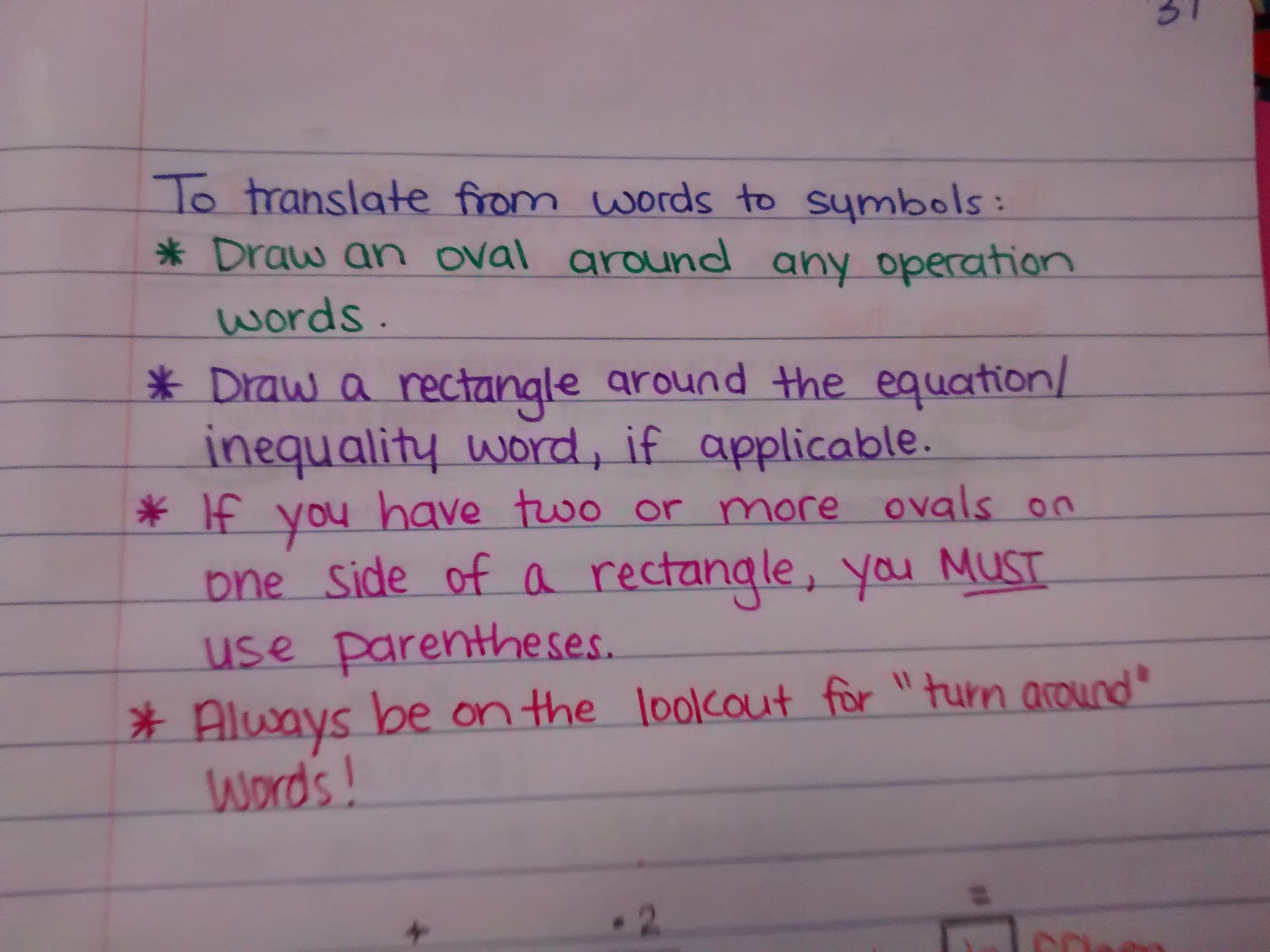
Practice Problems:
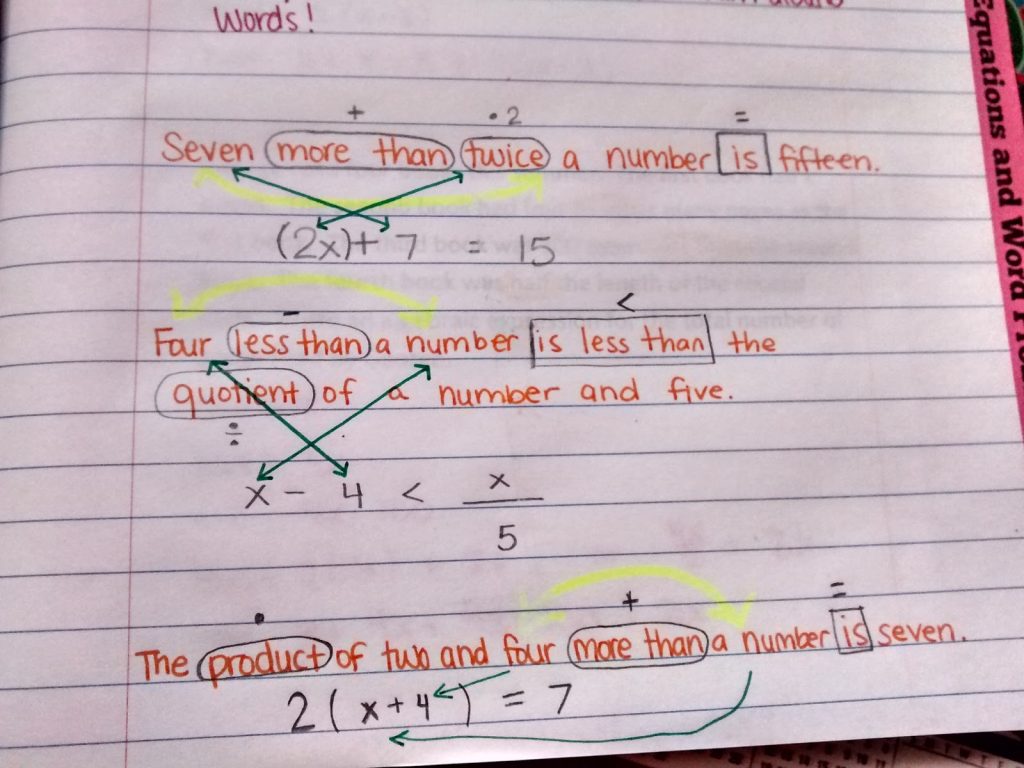
Note to self for next year: TYPE THESE!

Looking for more resources for teaching students to translate words into symbols? Check out my Translating Algebra Around the Room Activity.
Free Download of Translating Words Into Symbols Coloring Notes
Translating Words Into Symbols Coloring Notes (PDF) (1313 downloads )
Translating Words Into Symbols Coloring Notes (Editable Publisher File ZIP) (921 downloads )

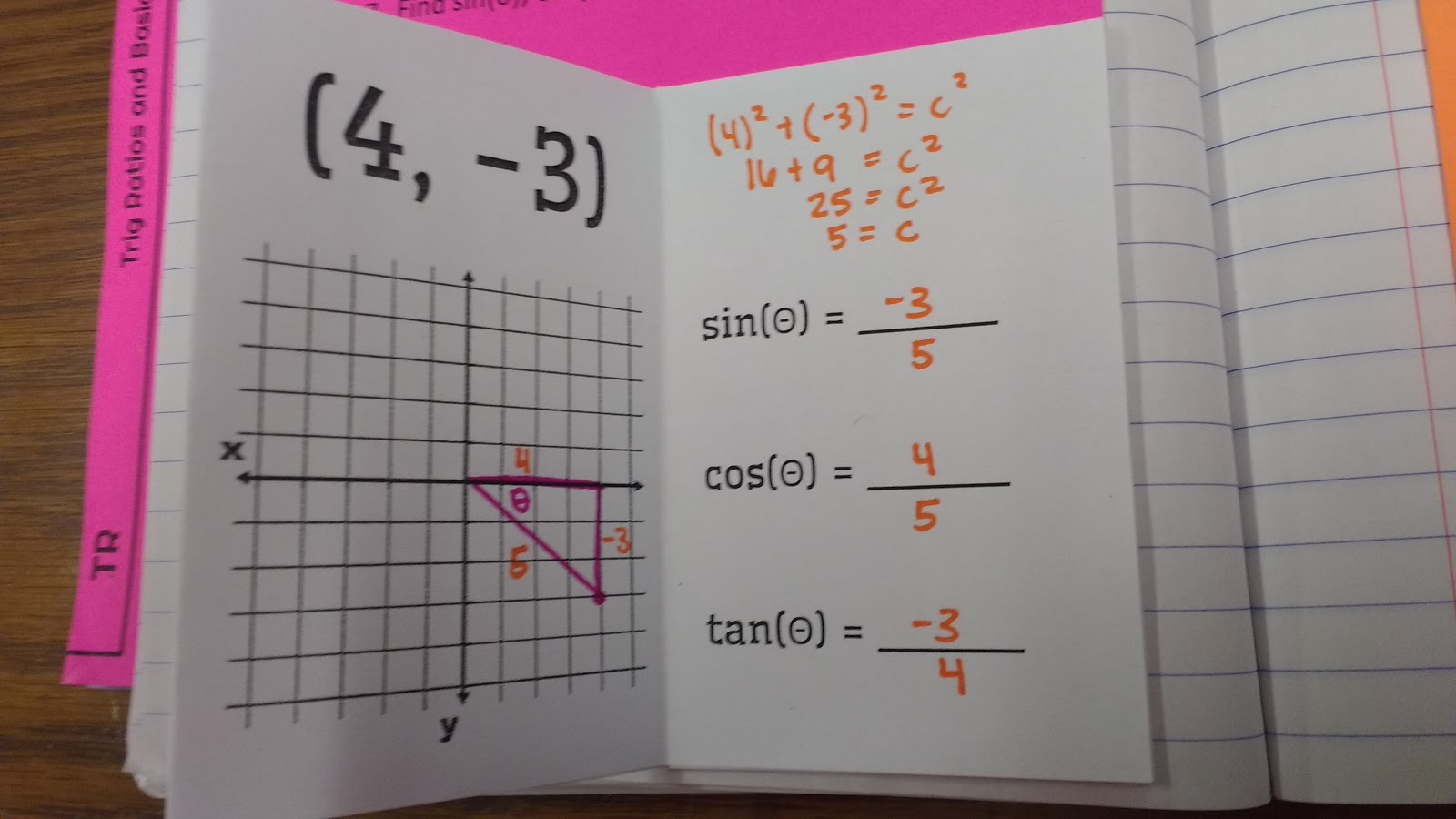
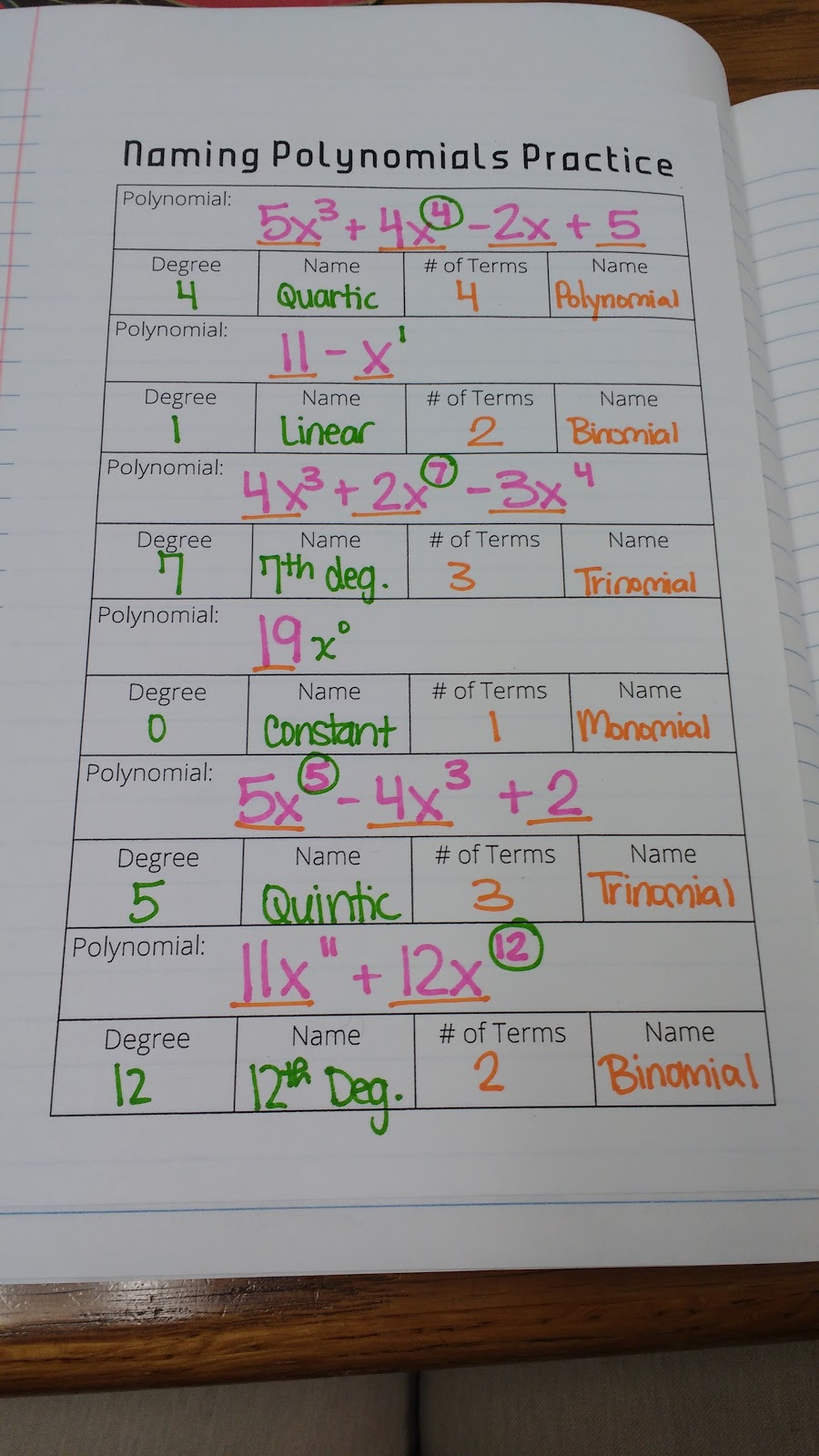
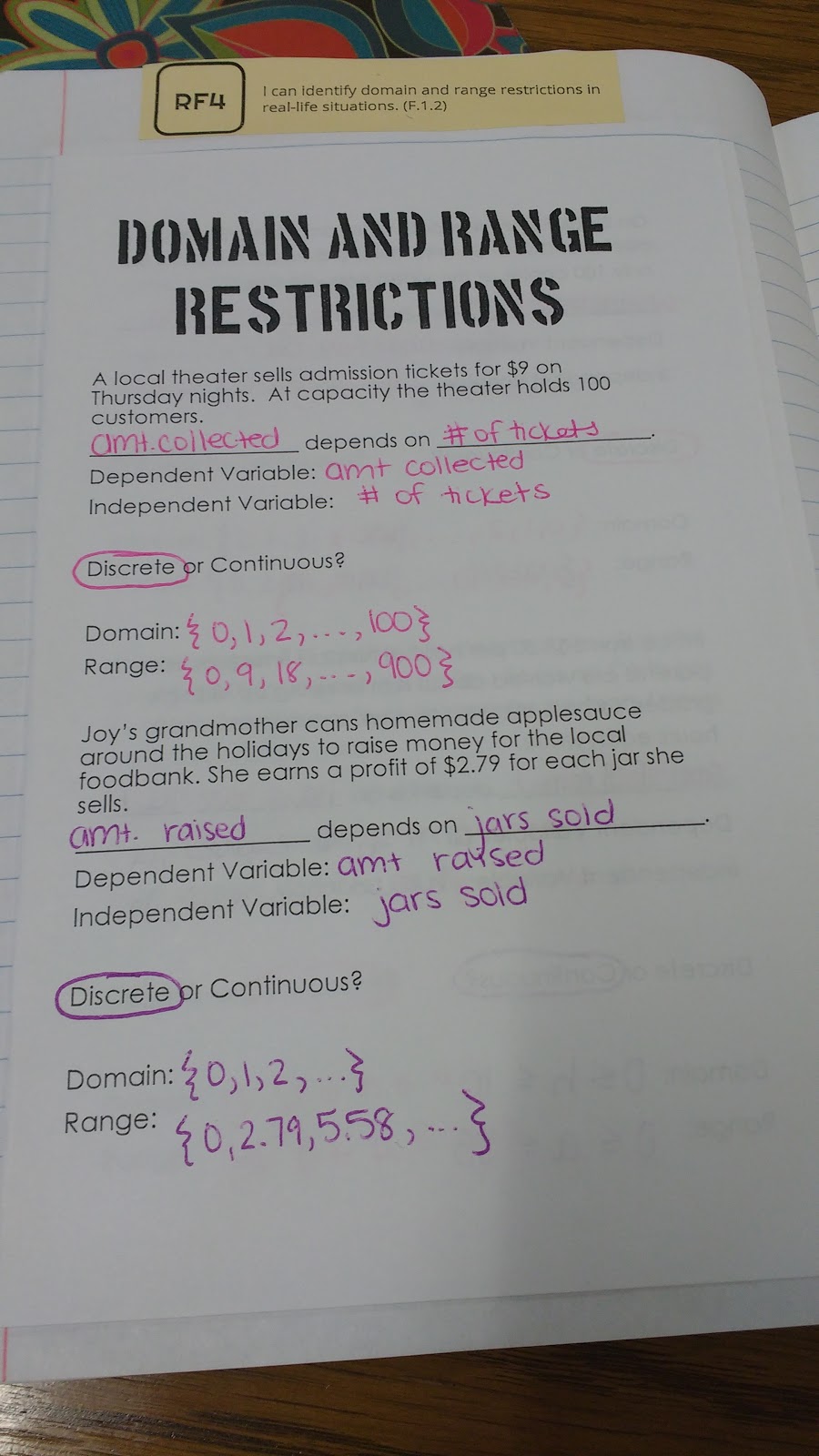
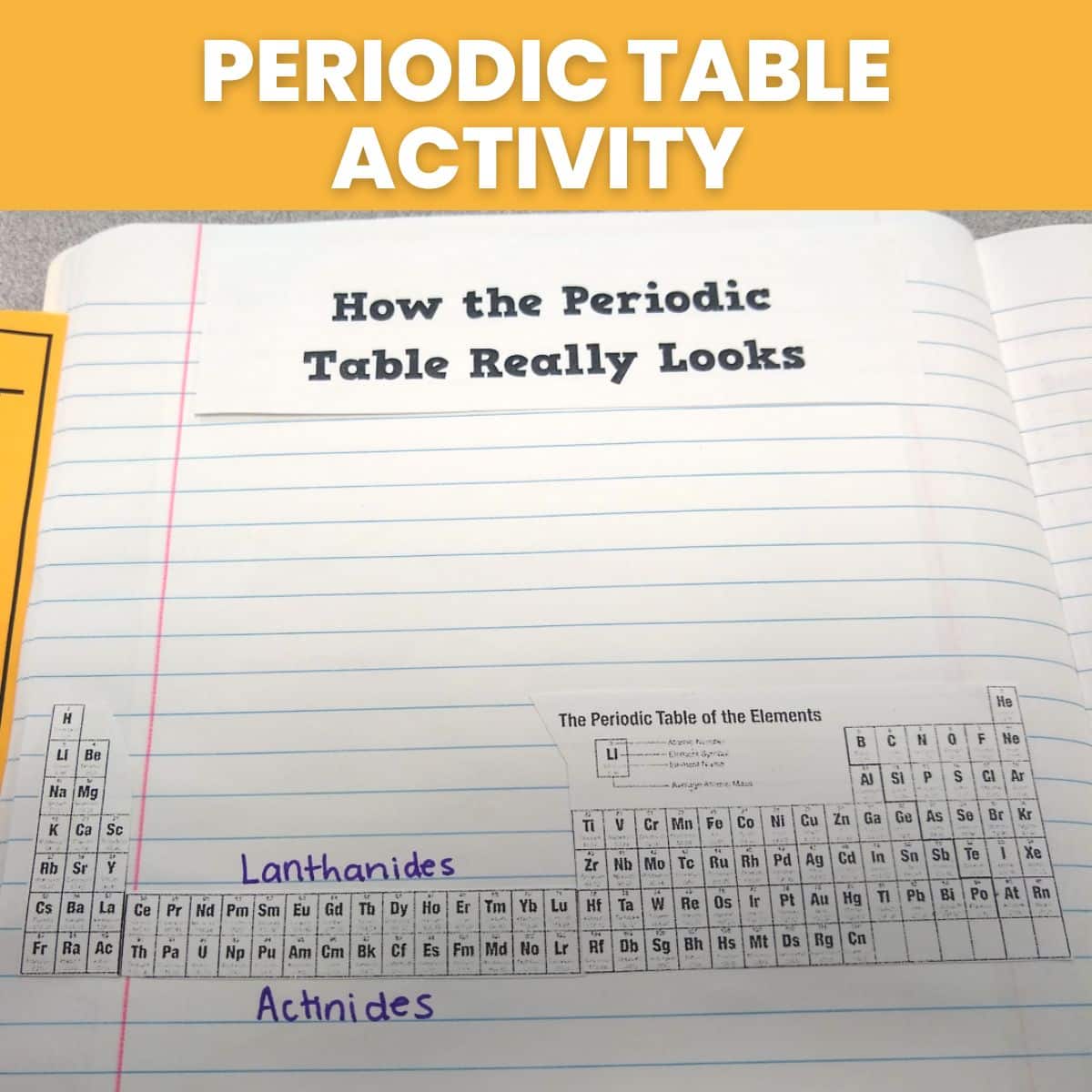
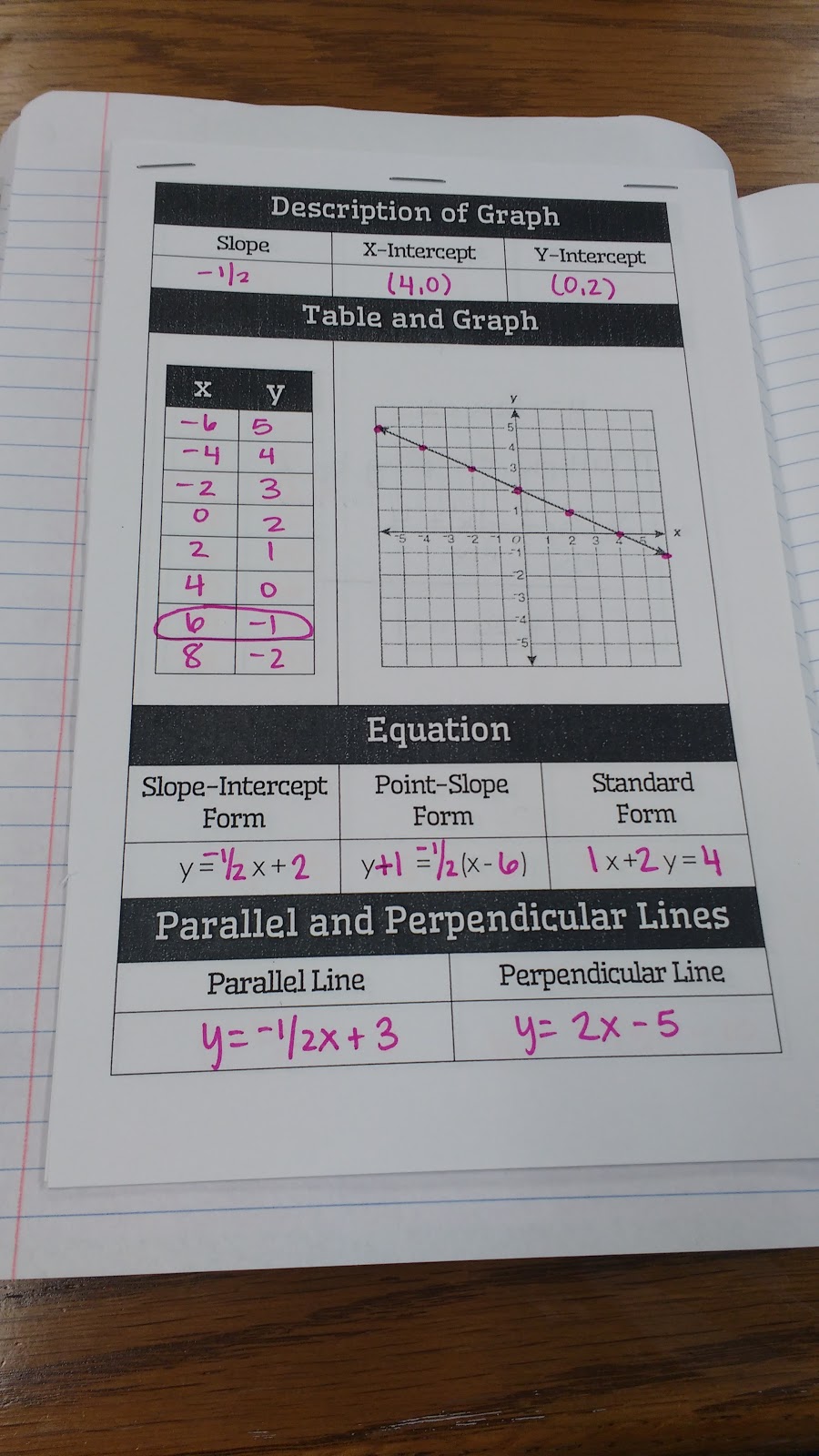
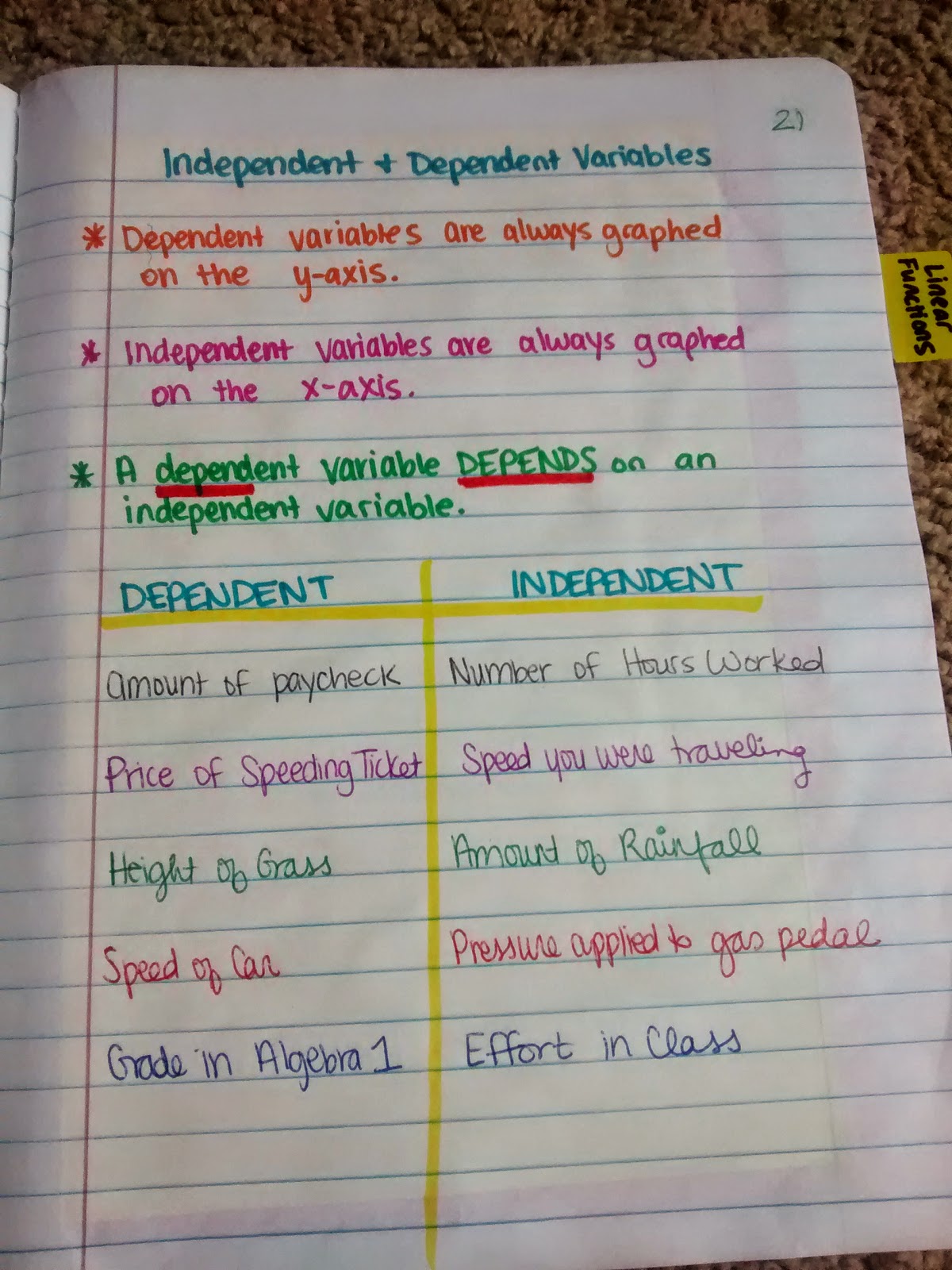
I'm teaching Writing Equations today and this is PERFECT! Going to rework my lesson to include this. Thanks!
How did it go?
It strikes me that having students practice going the other way might be valuable i.e. pick an equation of your own now write the written description of it. This would be analogous to foreign lang. classes whee you learn by both creating and consuming.
I asked them to go both ways on their quiz. You're right, I should have incorporated that more into our notes.
Sarah,
Do you have a link to the "Writing Expression Practice" page?
Thanks!
You're very welcome!
I emphasize looking for "is" to make it an inequality because I get a lot of confusion between five less than a number and five is less than a number.
Great idea! I hoped they would see this, but I think I need to teach it more explicitly next time!
I'm so glad I came across this blog post. Today I planned a matching activity with absolute value inequalities – matching to the compound inequality and graph. Instead of spending the time cutting and glueing, we turned it into a coloring activity. It still accomplished the same purpose and took way less time
Yay!
Thanks for sharing this. It really helped my 6th grade students write their expressions. I had them draw a diagonal line through "half" and color it for both multiplication and division. I am stumped though; can you tell me why "more" is colored for subtraction?
tcrebbin@coupeville.k12.wa.us
Thank you for this! You see I was having hard time to perceiving the word problems. This post helped me.
I call those words that require them to change the order as “switch words” … more than, less than, and from. I also mention that the official math words of sum, difference, quotient and product always have a partner “and” that is where the operation should be placed. Thanks for sharing!
Thanks for sharing! I always love hearing from other math teachers about how they teach concepts!